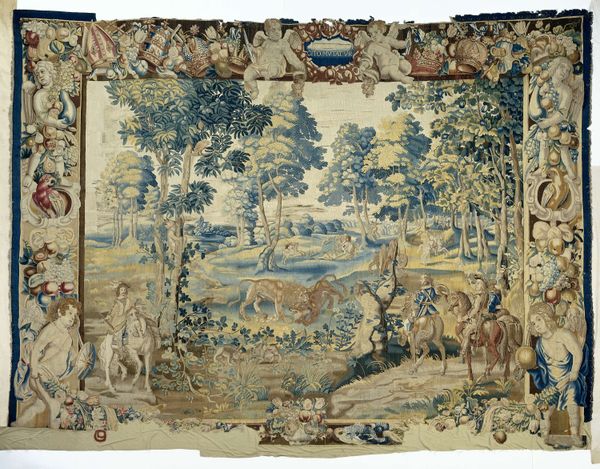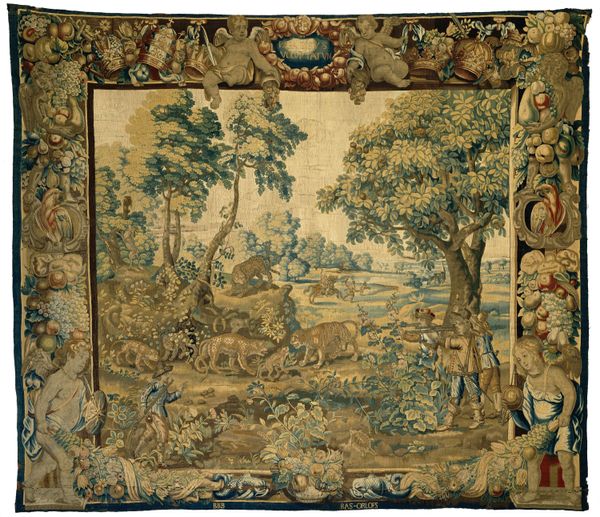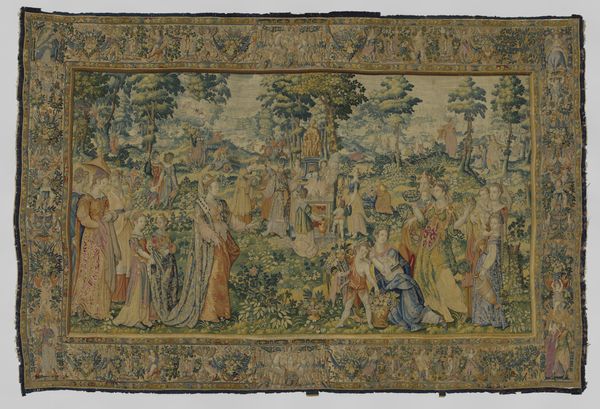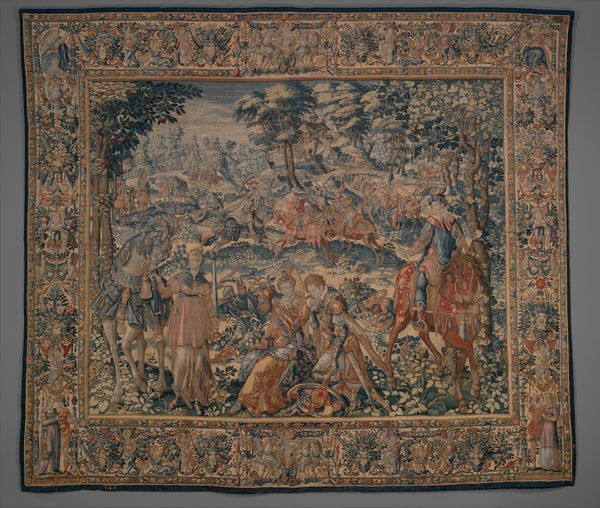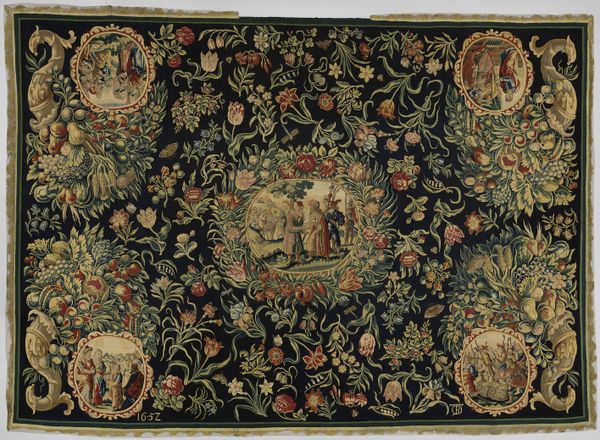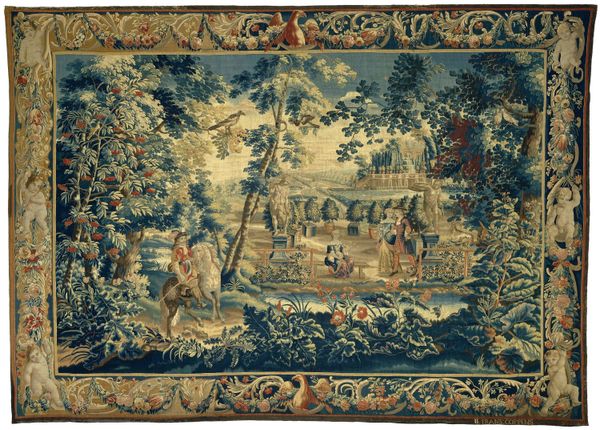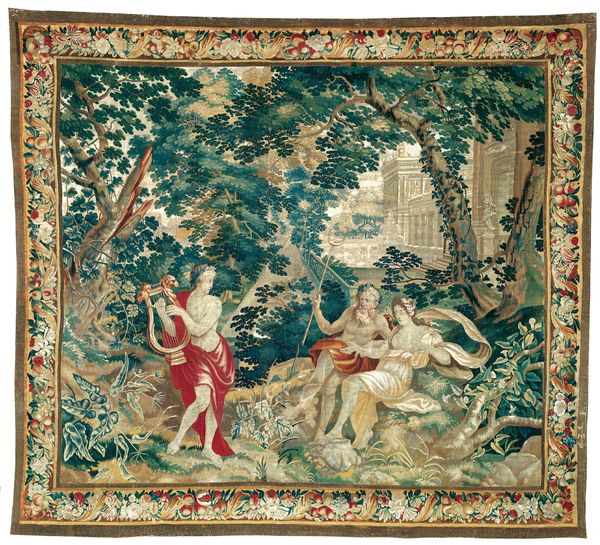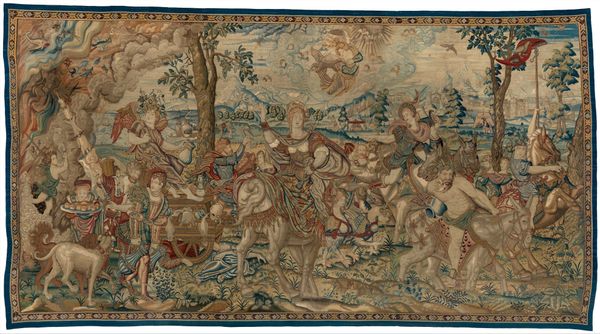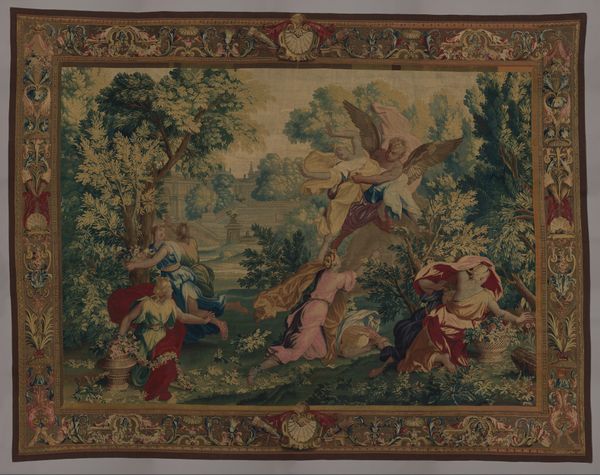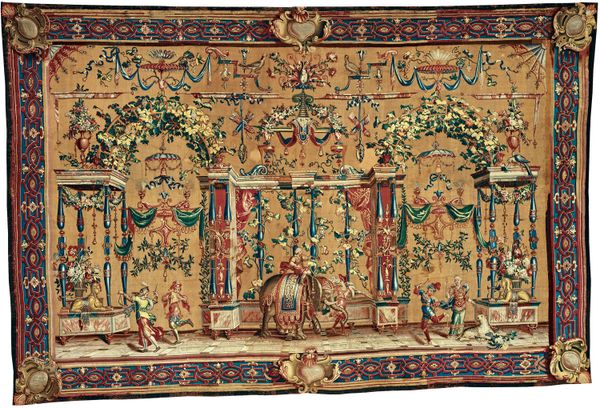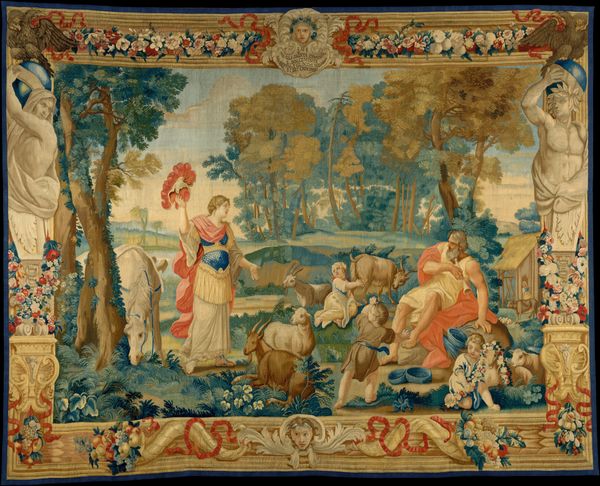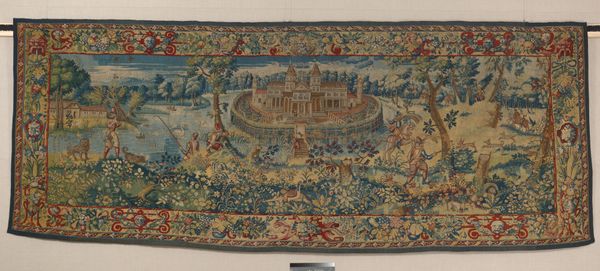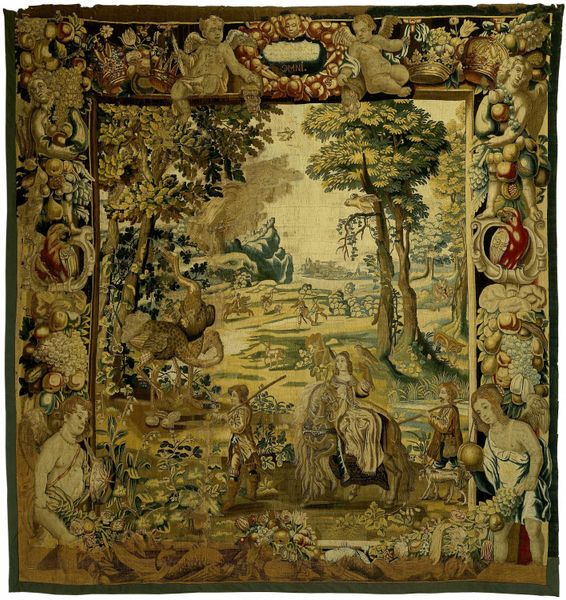
weaving, textile
#
narrative-art
#
weaving
#
landscape
#
textile
#
figuration
#
11_renaissance
#
genre-painting
#
history-painting
Dimensions: height 351 cm, height 347 cm, width 469 cm, width 468 cm
Copyright: Rijks Museum: Open Domain
Editor: This tapestry, "Meleager and Atalanta," was woven by François Spiering around the turn of the 17th century. The intricate detail is amazing; the figures seem poised for action within the lush landscape. How do you interpret this vibrant piece, especially considering the narrative it portrays? Curator: It's important to examine tapestries like these within their socio-historical context. Hunting scenes like this one weren’t just about the thrill of the chase. For the aristocracy, hunting was deeply performative, about demonstrating power, dominance, and social standing, so there’s definitely some political undertones at play here. Can you see how this tapestry might challenge or reinforce the position of women at the time? Editor: Well, Atalanta, as a mythological huntress, definitely defies some gender norms by actively participating in the hunt, right? It is rare to see them take a role like that during that era. Curator: Precisely! The inclusion of Atalanta offers a nuanced perspective. Her presence, while seemingly empowering, must also be viewed through a critical lens. Are they truly celebrating female strength and agency, or just co-opting them for the male gaze and patriarchal agenda? Look at where she is positioned in the scene – does she hold as much space or have the same commanding presence as the male figures? Editor: I see what you mean. She's present, but perhaps not centered in a way that truly challenges the status quo. Curator: Right. This highlights a crucial point: Representation doesn't automatically equate to liberation. So much of tapestry and textile art during the Renaissance served as vehicles of propaganda that glorified existing power dynamics. Considering this piece, is this piece simply echoing an established social hierarchy? Editor: That's really eye-opening! I hadn't considered how even seemingly progressive depictions might reinforce underlying power structures. I'll never look at a tapestry in the same way again. Curator: Exactly! It's about interrogating these beautiful objects and unpacking their complex relationship to history and society. I'm glad you got so much insight.
Comments
rijksmuseum about 2 years ago
⋮
Offended by the King of Calydon, Diana took revenge by sending a huge wild boar to ravage his kingdom. The creature sowed death and destruction. During a bloody hunt, the huntress Atalanta first wounded the animal, and Meleager (the king’s son) then killed it. Meleager, who was in love with Atalanta, presented the boar’s head to her as a trophy (left background).
Join the conversation
Join millions of artists and users on Artera today and experience the ultimate creative platform.
